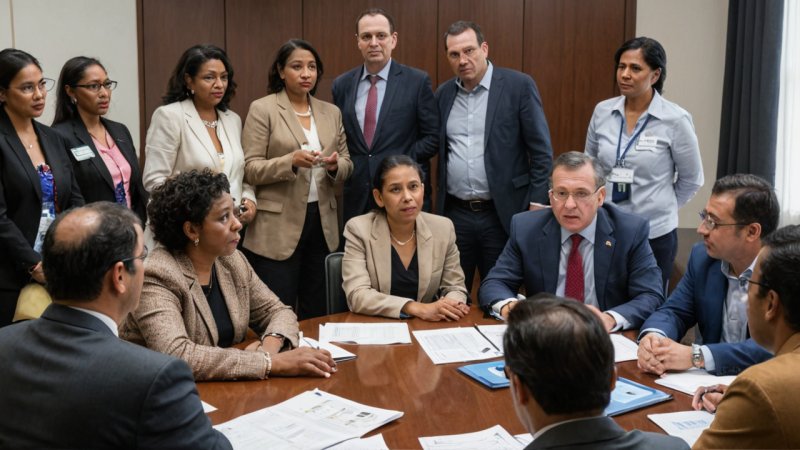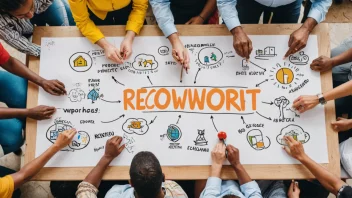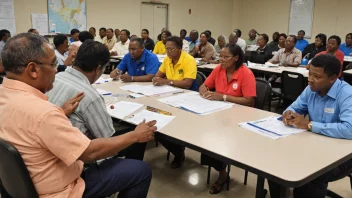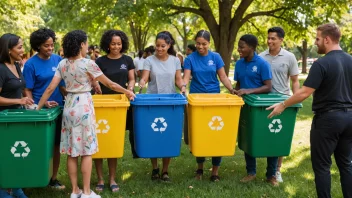Introduction
In times of crisis, the collaboration between governments and non-governmental organizations (NGOs) can significantly enhance the effectiveness of response efforts. This article will guide you through the essential steps needed to foster such collaboration, ensuring that resources are utilized efficiently and that communities receive the support they need during challenging times.
Step 1: Understand the Roles of Each Entity
Before initiating collaboration, it’s crucial to understand the distinct roles that governments and NGOs play in crisis response.
- Government: Typically responsible for policy-making, coordination of resources, and maintaining law and order.
- NGOs: Often operate on the ground, providing direct assistance and services to affected populations.
Step 2: Establish Clear Communication Channels
Effective communication is the backbone of any successful partnership. Here are some strategies to establish clear communication:
- Regular Meetings: Schedule regular meetings between government officials and NGO representatives to discuss ongoing needs and strategies.
- Shared Platforms: Utilize shared digital platforms for real-time updates and information sharing.
- Feedback Mechanisms: Implement feedback channels to ensure that both parties can voice concerns and suggestions.
Step 3: Identify Common Goals
Having shared objectives is vital for a successful partnership. Here’s how to identify and establish common goals:
- Needs Assessment: Conduct a joint needs assessment to understand the specific challenges faced in the crisis.
- Goal Setting: Collaboratively set realistic and measurable goals based on the assessment.
- Prioritize Actions: Determine which objectives should be prioritized based on urgency and available resources.
Step 4: Leverage Resources and Expertise
Both governments and NGOs bring unique resources and expertise to the table. Here’s how to leverage them:
- Resource Sharing: Identify resources that each party can share, such as facilities, staff, and funding.
- Training Programs: Organize joint training programs to enhance the skills of personnel from both sectors.
- Utilize Local Knowledge: NGOs often have deep community ties; utilize this knowledge to improve outreach and effectiveness.
Step 5: Implement Joint Action Plans
Once goals are set and resources are identified, it’s time to put plans into action. Follow these steps to implement joint action plans:
- Draft a Plan: Create a comprehensive plan outlining roles, responsibilities, timelines, and expected outcomes.
- Assign Responsibilities: Clearly define who is responsible for each aspect of the plan.
- Monitor Progress: Establish a monitoring system to track progress and make adjustments as necessary.
Step 6: Foster Trust and Relationships
Building trust is essential for long-term collaboration. Here are ways to foster trust and strengthen relationships:
- Transparency: Be open about challenges and successes to build credibility.
- Celebrate Achievements: Acknowledge and celebrate the successes of the partnership, no matter how small.
- Conflict Resolution: Develop a clear process for resolving conflicts that may arise during collaboration.
Step 7: Evaluate and Reflect
Finally, it’s important to evaluate the collaboration’s effectiveness and reflect on lessons learned:
- Conduct Evaluations: After the crisis response, conduct evaluations to assess what worked well and what didn’t.
- Gather Feedback: Solicit feedback from all stakeholders to gain comprehensive insights.
- Document Lessons Learned: Document findings to inform future collaborations and improve responses.
Conclusion
In summary, effective collaboration between governments and NGOs during crisis response requires understanding roles, establishing communication, identifying common goals, leveraging resources, implementing action plans, fostering trust, and evaluating efforts. By following these steps, we can enhance the response to crises and ensure that help reaches those who need it most. Remember, every action counts, and your involvement can make a significant difference in your community and beyond.






